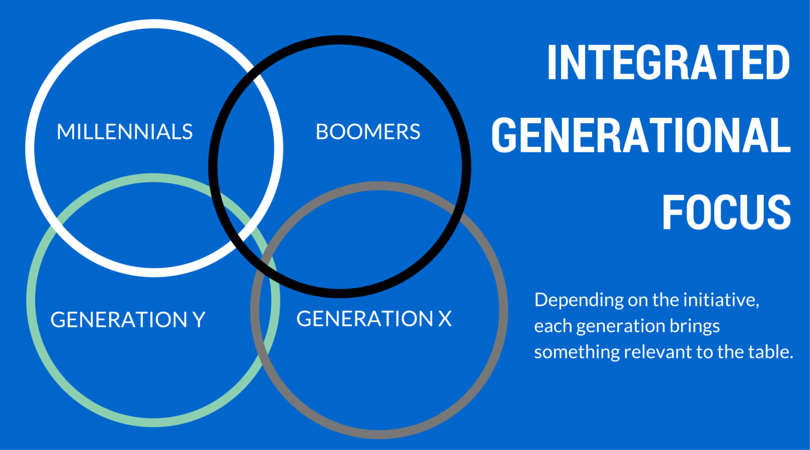Everywhere we turn, we hear about tailoring our social media marketing to millennials. It’s in the newsletters in our inboxes, the webinars we see advertised and the luncheon speaker we listen to on a weekday afternoon. We hear about how we should be listening to what they think, how they feel and what they’re interested in doing.
Millennials are technologically savvy, social media driven and living their digital lives. Simply put – they’re important. I get that. However, I would make the case that focusing all of our attention on millennials and leaving the boomers along with generation X and Y out in the cold isn’t a great idea.
I’m not alone.
“With boomers poised to make up half the U.S. population in 2017, marketing to boomers just makes good sense,” said Beth Brady, global head of Nielsen Marketing.
It doesn’t stop there.
“Today, Generation X are no longer grunge-clad slackers. Instead, they’re respectable adults in their 30s and 40s. Many are married, have kids, own their own homes. In other words, they’re in or entering their prime earning years and have lots of things they need (and want) to buy,” said Rieva Lesonsky in Small Business Forum.
As a proud member of Generation X, I’m pleased to hear we’re still important too. In addition, my younger brother has a stake in this too holding up Generation Y. “There’s an important reason that brands are focusing so intently on pleasing Generation Y: their unprecedented influential power,” said Nicole Fallon, assistant editor of Business News Daily.
But if they’re all important, how do we ensure we don’t get short sided and walk through the world with millennial-colored glasses? Consider these tips:
Integration – As clichéd as it sounds, integration is imperative so we don’t jump on the millennial bandwagon without considering the other generations as potential primary and secondary audiences.
Turn offs – If we focus primarily on any generation (millennial or otherwise), we run the risk of alienating (and turning off) others without intending to do so. Consistency of your message no longer works. Right person. Right message. Right time. Regardless of the target, consider how the message would be received if it’s going to potentially be seen by other targets.
The more things change – The more they stay the same. It’s been reported that millennials have similar characteristics as other generations and to a certain extent want many of the same things as their older generational counterparts. With that understanding, socially and digitally savvy marketers would be wise to channel their messages with a more generational inclusive message.
Remember it’s 2015 – If we’re truly looking at targets from a generational standpoint, we need to consider that it’s 2015. We’re technically outside of the millennial generation, and we should be asking “who’s next?” Generation Z – that’s who.
“The recent headline-grabbing studies suggest that Gen Z attention spans have shrunk to eight seconds and that they’re unable to focus for extended amounts of time. However, we found that Gen Z actually have what we’re calling highly evolved ‘eight-second filters,’” writes Jeremy Finch of FastCompany.com.
So, where does that leave us?
Social media marketing is about engaging with your customers on an emotional level, and the better you do at defining that, the better job you can do. In thinking about marketing to the generations, it’s more appropriate to think of each on a level of individuals vs. a group. It’s not about how many you reach, but reinforcing or changing paradigms on that individual level.



